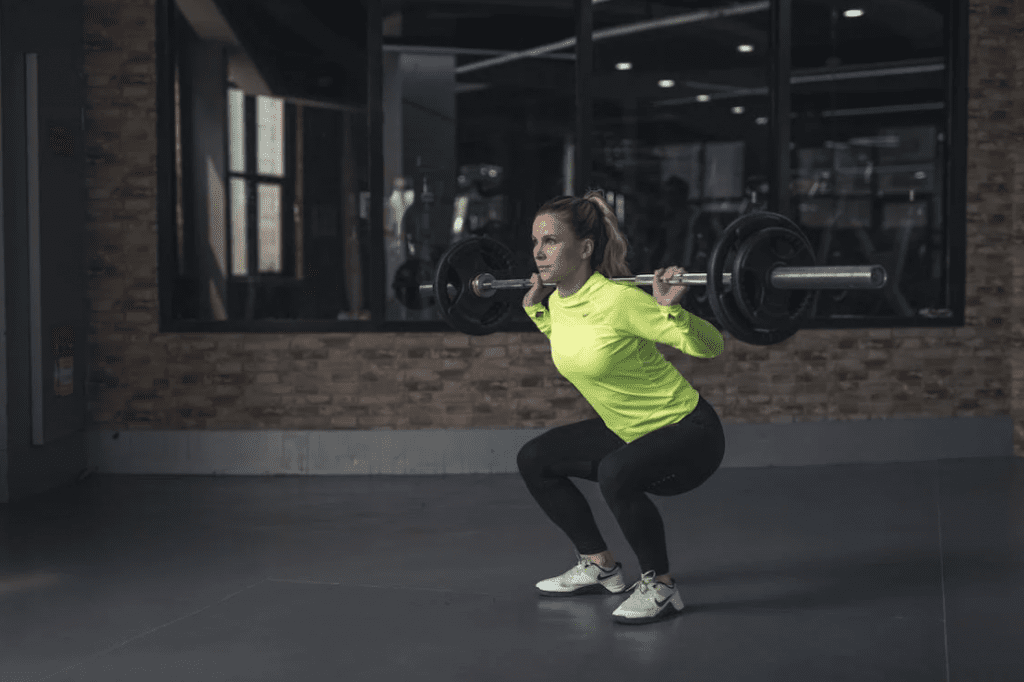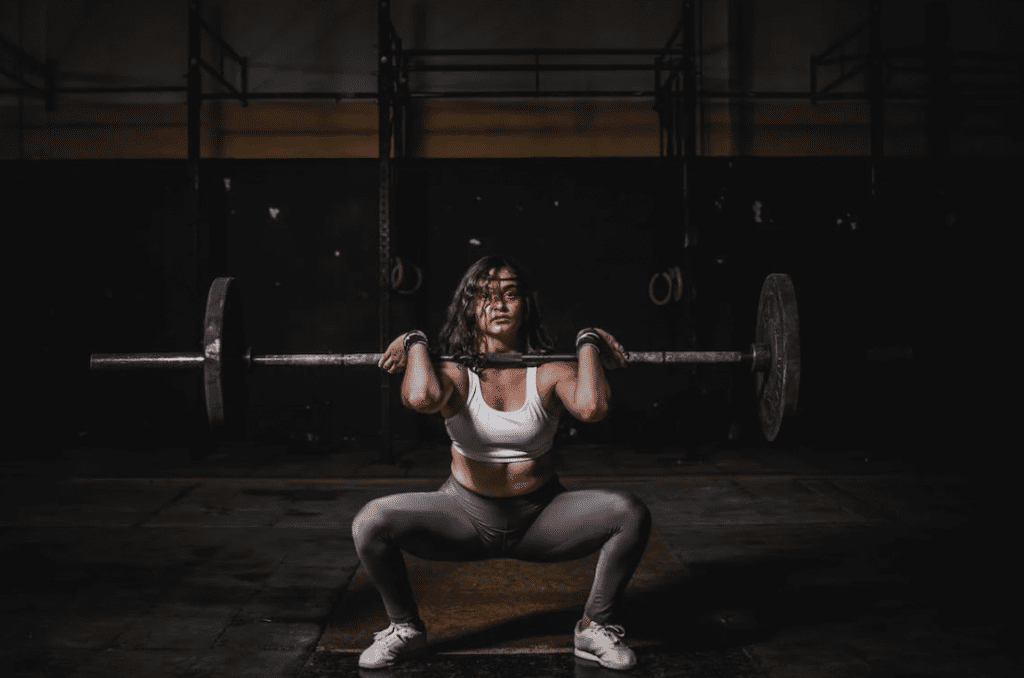Squats are an extremely common compound movement that we see throughout the gym. For most people, they are a staple movement to include in a leg day.
However, like any other exercise, squats can be ineffective or even dangerous if you’re performing them with incorrect form.
You can read more on the importance of having correct form when lifting weights.
To sum it up for squats, poor form can put you at risk of knee, hip, and back injuries, as well as decrease your ability to perform well.
Let’s get into it.

What are the most common mistakes in squat form
1. Allowing your knees to cave in
Having your knees cave in closer than the heals of your feet is probably one of the most common ways that people mess up their squat form.
However, this is extremely bad because your knees will be moving in an unnatural path and a lot of unnecessary tension will be put on your knees.
2. Arching your back
Arching your back too far can put way too much tension on your lower back putting you at an extreme risk for a lower back injury.
Instead, you’ll want to keep your back straight through the entire movement and focus on bracing your core.
3. Having your head pointed too far upwards
For some reason, it’s common for people to point their head to the sky when they first begin squatting. But again this is dangerous because it takes your head out of alignment with your spine.
Instead, you’ll want to keep your chest up and your head in a neutral position – not too far up, slightly tilted downwards.
4. Lifting your heals
Lifting your heals when squatting risks setting you off balance.
Instead, you’ll want to have your feet laying flat on the ground throughout the entire movement. You’ll also want to focus on centering your weight and evenly distributing it throughout your whole feet.
5. Leaning your torso forward when coming up
It’s common for people to have a tendency to have perfect form on the way down, but on the way up, they bend forward at the hip and fold inwards.
Again, this will put excess strain on your lower back when your torso moves out of alignment.
You’ll want to keep your back straight, at a slight forward angle to begin, and to only straighten up as you lift up, not lean forward.
What is good squatting form
There is no such thing as “perfect” squat form because everyone’s body mechanics move differently.
However, some things to keep in mind are:
1. Stand with your feet shoulder width apart
2. Have your toes pointed in the same direction as your knees
3. Don’t let your knees go too far forward over your toes
4. Hit a good depth (I’ll talk about depth in my next point)

With these in mind and the mistakes to avoid making in mind, how I figured out what worked for me was keeping the weight low and switching adjusting my movements little by little.
I did this until I found the movement that felt the best for me, with no pain and a great stretch on my muscles, this became my go-to squatting form.
How deep should you squat
Much like there is no perfect squat form that will work for everyone, there is no perfect depth that will work for everyone.
Generally, people say to make sure you at least hit parallel when you squat. This means your thighs will be parallel to the ground.
I’d say this is a good place to start and a good goal to hit in order to get the most out of the movement. That is if you can do it comfortably, without pain.
Some people like to go even deeper than parallel, but this isn’t necessary unless it works for your body mechanics.
For myself, I know that when I squat below parallel, I start getting knee pain.
Just like I did for my squat form, I found out a depth that worked for me by keeping the weight light and playing around with how deep I go, until I found what felt best.
How to correct your squatting form
To correct your form, you’ll first need to evaluate what changes you should make.
The first step is to know the components that make up perfect squatting form.
Once you know what makes up good form, you’ll want to see yourself squatting, or have someone else watch you, and evaluate where improvements can be made.
My favorite way to do this, and probably the easiest way depending on your gym, is to squat in front of a mirror.
By squatting in front of a mirror, I’m able to see my form, evaluate my depth, and check to make sure I’m hitting all the essential components. This is especially helpful when I’m increasing weight in my squat which is usually a point when people have a tendency to compromise their form a bit.
If you don’t have a mirror to squat in front of, you can set up your phone, record yourself squatting, then watch the video of yourself to evaluate your form.
If you don’t want to evaluate your form yourself, you can get a friend or any experienced lifter to watch you squat and give you pointers on areas for improvement.
After you evaluate the areas you could make improvements, you’ll want to correct these parts of the movements.
I strongly recommend you lower the weight to do this because it is very easy to injure yourself if you’re lifting too heavy with an unfamiliar form.
It might take you awhile to get used to the new form, but little by little you can work your way back up to the weight you were at before (and most likely be able to increase the weight from there much quicker).
Takeaways
Remember, if you’re someone who implements squatting into your routine, you’ll want to make sure your form is as good as it can get.
Even if you think it’s perfect, you still might want to re-evaluate it.
Squatting is one of the easiest ways to get injured and you don’t want to be taken out of the gym for an injury that was entirely preventable.